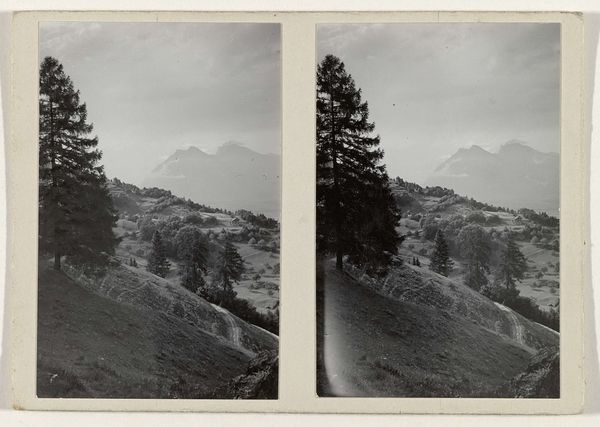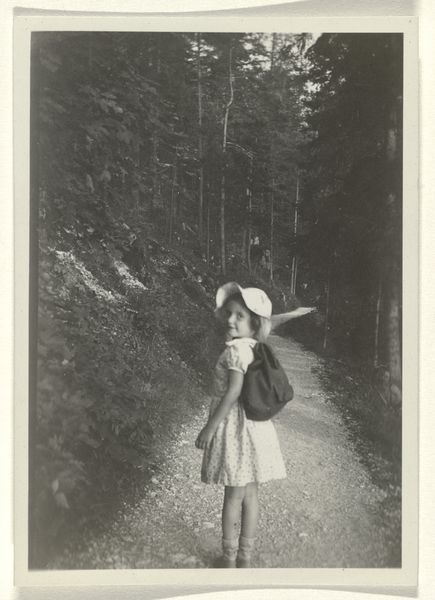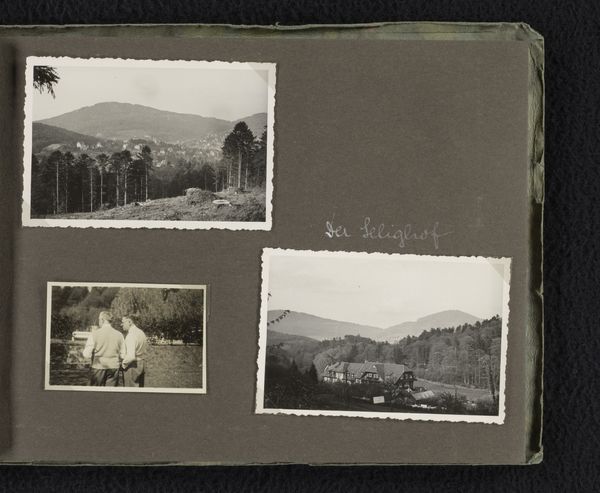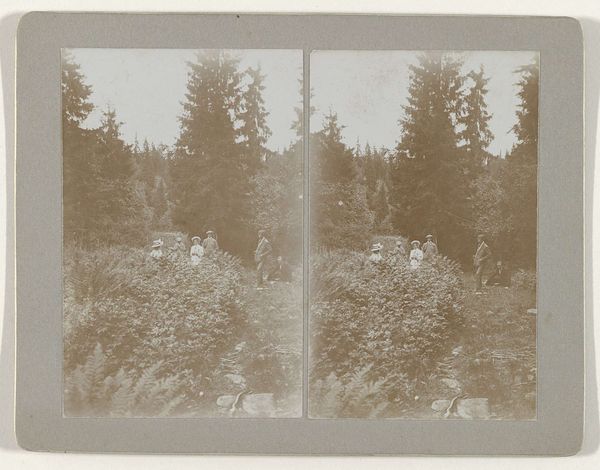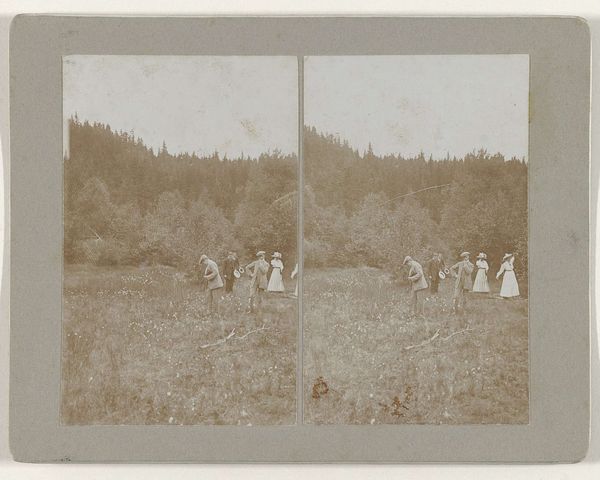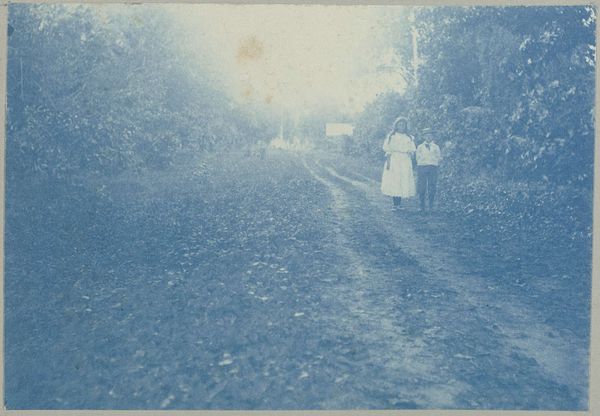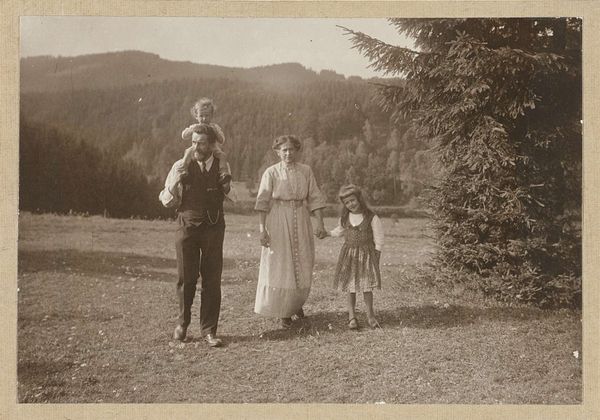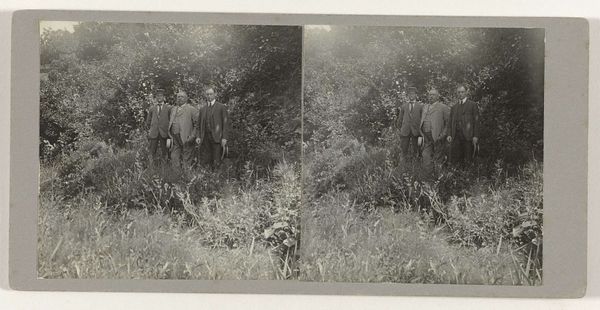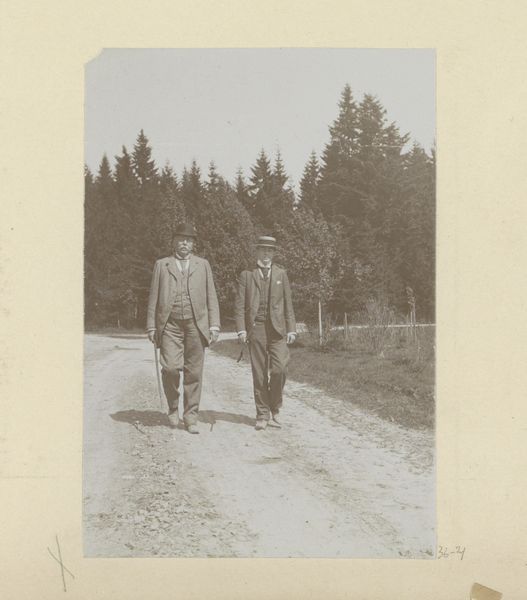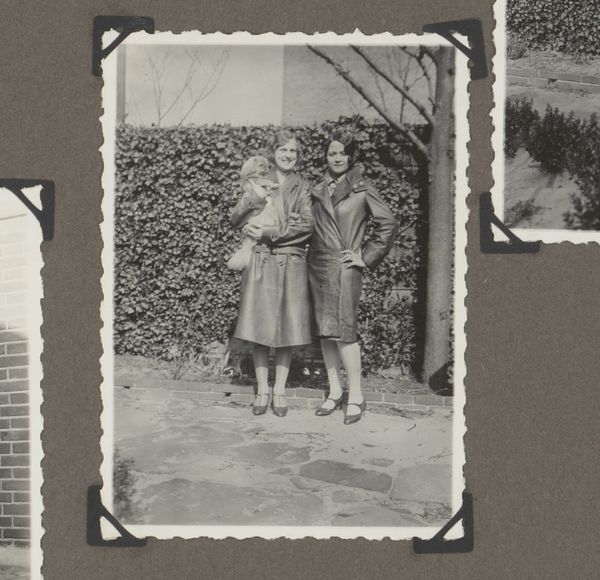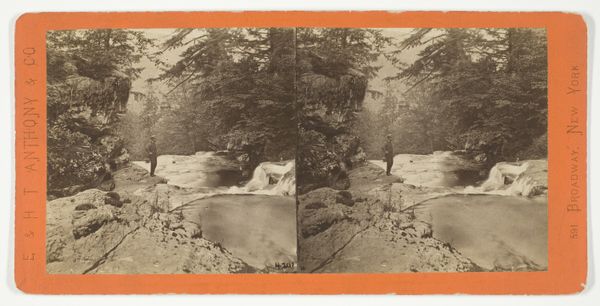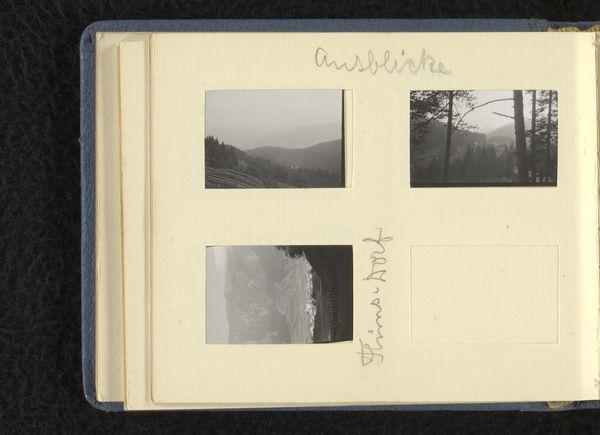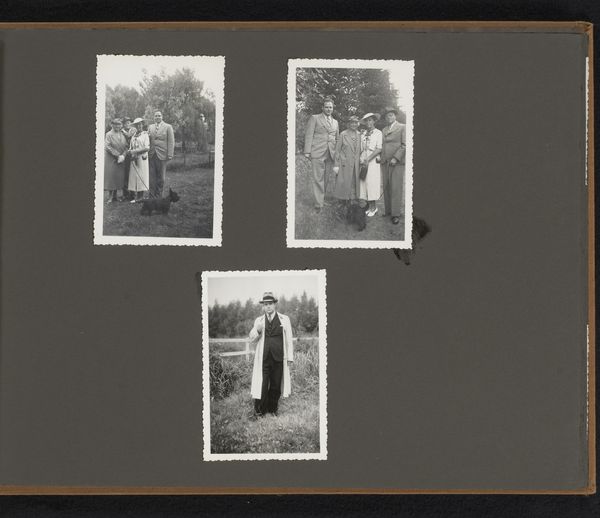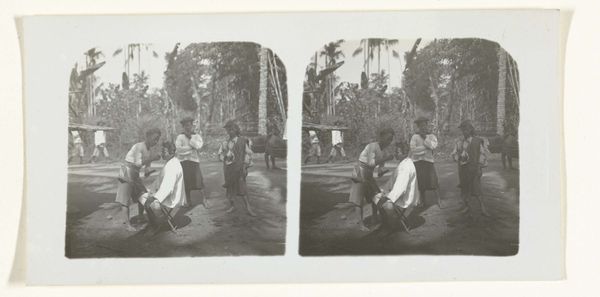
Portret van een man en vrouw tijdens een wandeling door een bergachtig en bosrijk gebied c. 1895 - 1920
0:00
0:00
photography, gelatin-silver-print
#
portrait
#
pictorialism
#
landscape
#
photography
#
gelatin-silver-print
Dimensions: height 80 mm, width 104 mm
Copyright: Rijks Museum: Open Domain
Curator: Here we have an early 20th-century gelatin-silver print titled "Portret van een man en vrouw tijdens een wandeling door een bergachtig en bosrijk gebied," attributed to Geldolph Adriaan Kessler. The Rijksmuseum holds this intriguing photographic diptych. Editor: It's remarkable, isn't it? The contrasting light in each frame immediately strikes me. One side is softer, almost dreamy, while the other is sharper, almost clinical, especially with the couple situated at the forefront of both. Curator: The couple are positioned along what seems to be an unpaved mountain road in the portrait. It prompts reflections on travel during that time and who had access. Kessler's lens allows us to consider how gender, class, and race played pivotal roles in leisure and landscape appropriation. What does this particular snapshot tell us about the rise of tourism and the politics embedded in the 'right to roam'? Editor: A good point. Looking at the tonality, it is subtle. Observe how the highlights softly merge into shadows. The mountain becomes a looming, almost abstract presence. Its pictorialist treatment creates an intriguing tension between representation and abstraction. There's a formal balance at play; it leads to my thinking about the geometric elements within. Curator: Pictorialism, indeed! It aimed to elevate photography to the status of art by emulating painting and etching. We can ask: how does Kessler negotiate the visual codes of landscape painting to frame or perhaps even legitimize the subjects within the social milieu? Editor: Consider too, the textural variations of the terrain contrasted to the relatively flat surface of the couple. Curator: This could provoke discussions around social performances and the performativity of identity in such liminal landscapes during the period when the print was conceived, circa 1895-1920. Were they posing or merely captured during the trek? Does this reveal how gender relations are staged? Editor: So many dichotomies converge in the print that enhance and obscure. On one hand we have light, tonality, and geometric variation; then cultural appropriation and performative relationships which offer a striking look at form meeting the weight of cultural content. Curator: Exactly! The composition as it draws from the art canon, yet still offering up salient considerations of identity formation—a thought-provoking lens on society’s constructs.
Comments
No comments
Be the first to comment and join the conversation on the ultimate creative platform.
